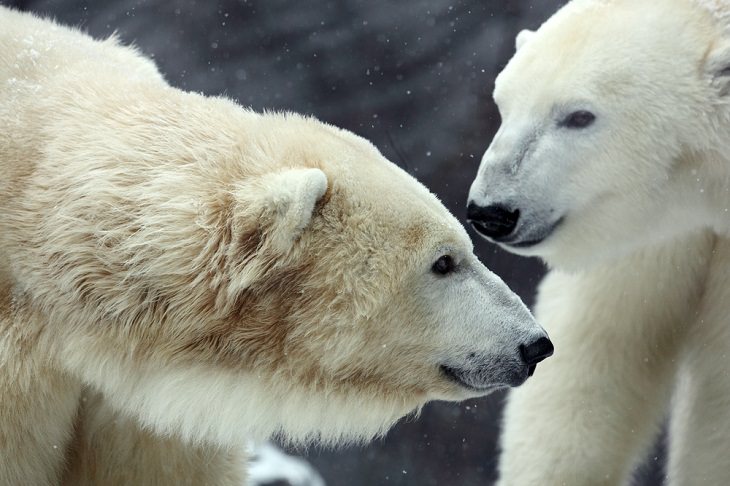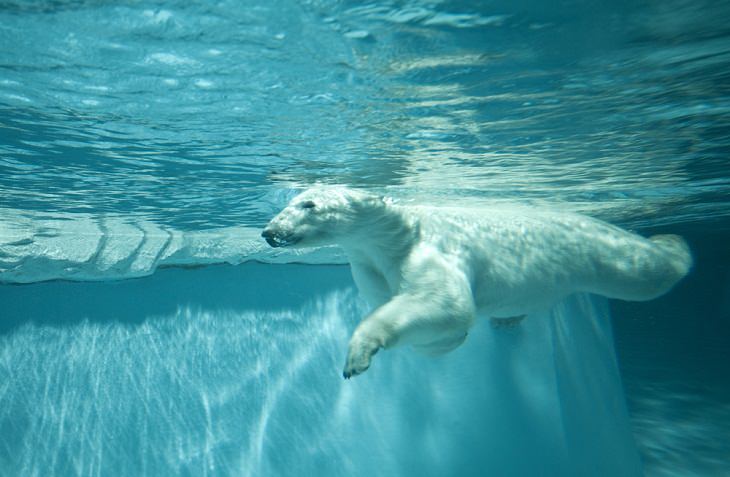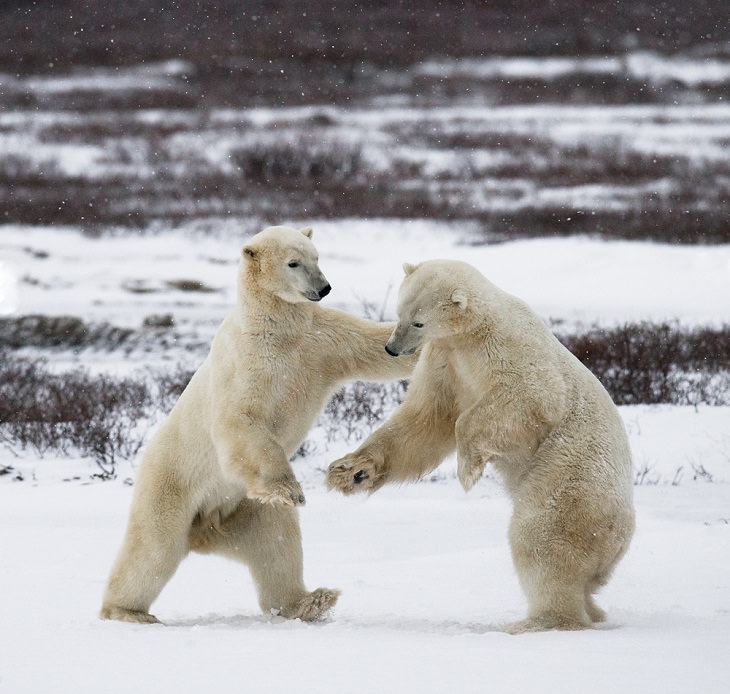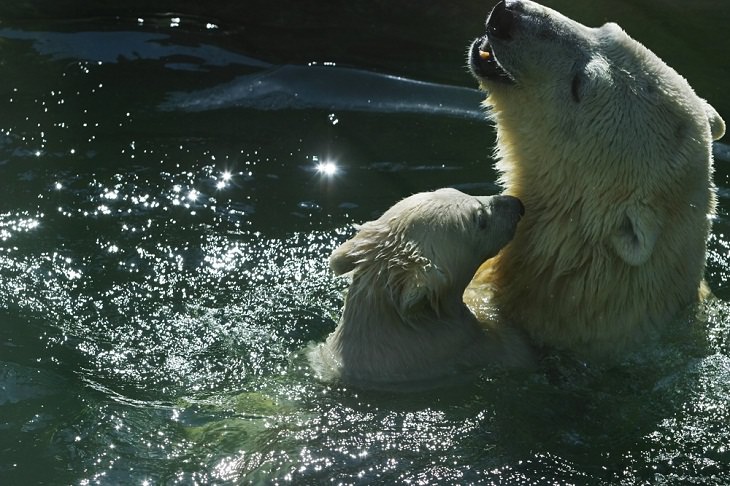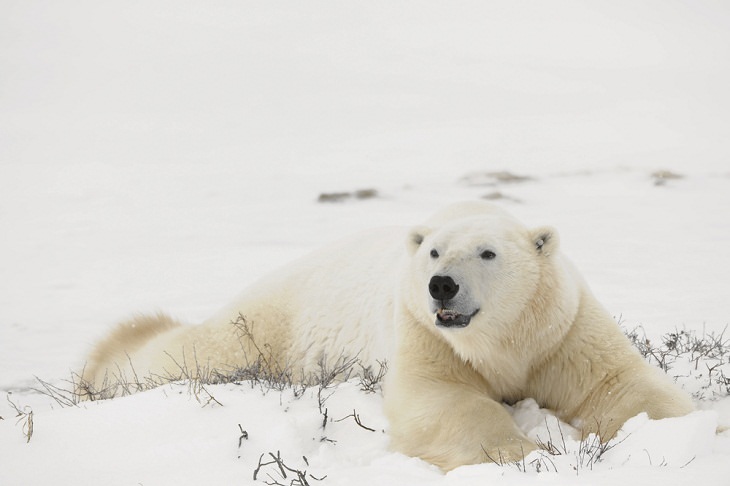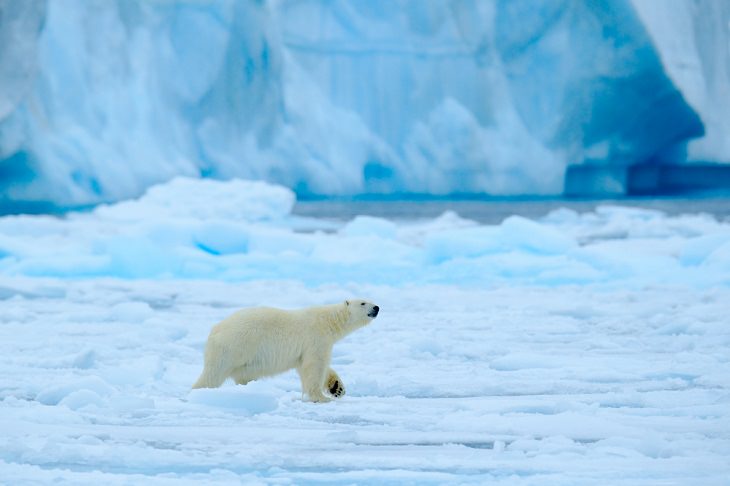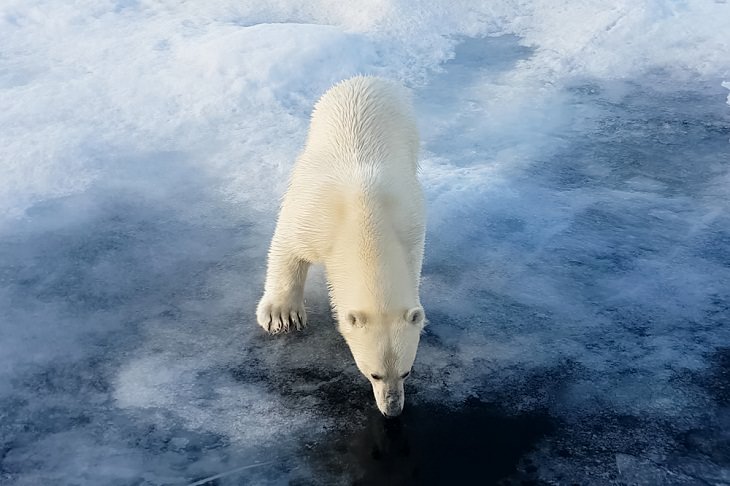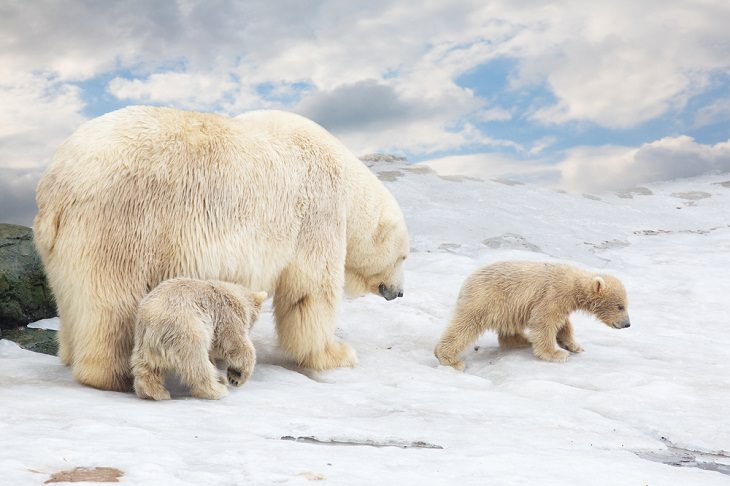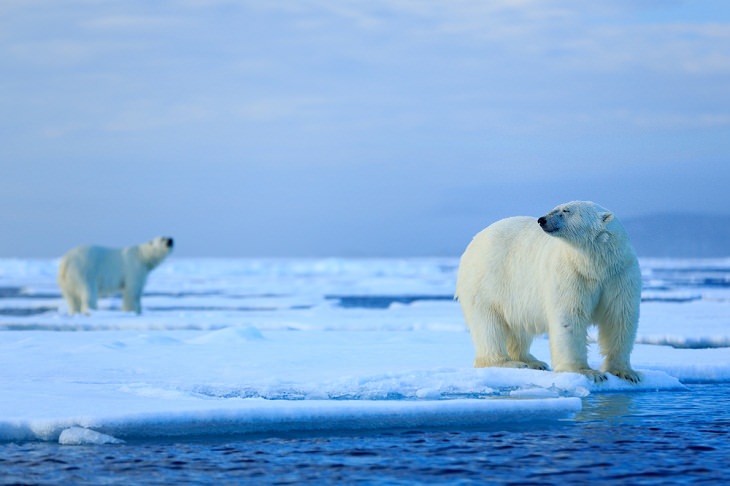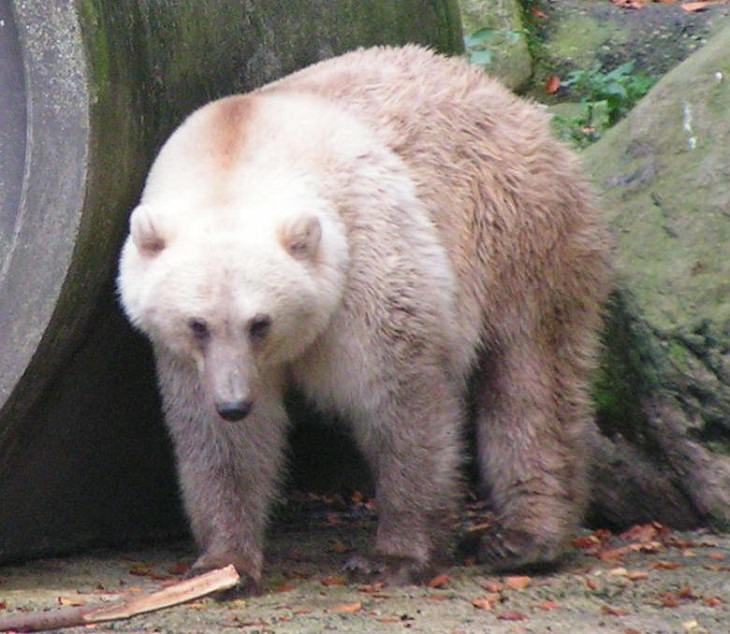Did you know that polar bears aren't actually white? Yes, the great white bears of the North actually have black skin while their fur is transparent with a hollow core which scatters and reflects visible light. This makes the polar bear's fur appear white. This amazing adaptation also helps the animals keep warm by absorbing and retaining the sun's heat — a useful trait in the harsh Arctic tundra.
If you notice their snouts and the surrounding area, however, you can find traces of the bear's black skin.
2. They are great swimmers
Despite their bulky size, polar bears are excellent swimmers. In fact, they can comfortably swim for days at a steady pace of around 10 km per hour (6 mph) to get from one piece of ice to another. Their large, slightly webbed, front paws are adapted for swimming and the animals use them like paddles in the water. Furthermore, their bodies are more streamlined than that of other bear species, helping them wade swiftly in the waters.
Polar bears can also hold their breath for about 2 minutes in the water. Amazingly, their nostrils shut down automatically so as to prevent them from inhaling water.
3. They're massive
Polar bears aren’t just huge creatures; they are massive! Adult polar bears can grow up to 2.8 meters (9.1 feet) long and weigh around 800 kilograms (1,763 pounds). Polar bears are also considered to be the biggest bear overall and are known to be the largest land-dwelling carnivore. Despite their size, though, these bears are nimble on their feet and can reach speeds of up to 40km per hour (25 mph) on land.
4. They are considered marine mammals
You would be surprised to know that polar bears are classified as marine mammals – just like whales, seals, and dolphins. This is because they spend so much of their lives on the sea ice of the Arctic Ocean and depend completely on the ocean ecosystem for their survival. Their physical attributes, too, make them perfect for life in the cold Arctic Ocean. For instance, they have a thick layer of blubber and a water-shedding coat that helps keep their bodies warm in freezing temperatures both in and out of the water. And, as we have already discussed, polar bears are excellent swimmers as well.
Today, polar bears are the only bear species to be considered marine mammals. Even their scientific name - Ursus maritimus - means "maritime bear" or "sea bear".
5. They love a snow bath
Polar bears like being clean and dry because a dirty and wet coat is a poor insulator. Thus, whenever their coats get dirty, particularly after they have had a meal, they simply give themselves a proper snow bath by rubbing and rolling around on the snow to clean their fur. Doing so also helps them cool off when they get too hot.
6. Polar bear paws act like snowshoes
An adult polar bear’s paws are huge and measure up to 30 centimeters in diameter (11.81 inches). These large paws act like snowshoes and spread the huge weight of the animal evenly, helping them move over ice and snow over long distances with comfort.
The sole of each polar bear paw has black footpads that are covered by small, soft bumps known as papillae (dermal bumps). Papillae create friction between the foot and the ice and hence help the polar bear not to slip. They also have long hairs growing between their pads and toes that prevent them from slipping on the snow.
7. Polar bears have a tough time when it comes to hunting
Despite being highly skillful ambush hunters, polar bears struggle to get food. In fact, less than 2% of polar bear hunts are successful. Life in the Arctic is harsh as is, and now that the ice cover is declining due to climate change every year, these bears are unable to catch enough prey to meet their energy needs. Polar bears primarily hunt seals but when days are tough they also feed on small mammals, birds, and eggs, and even scavenge on carcasses.
8. Female polar bears give birth to their cubs in snow dens
A female polar bear builds a maternity den when she’s pregnant. This is where she gives birth to her baby cubs (around November and December) and nurses them until spring.
The den sites that mother polar bears choose are generally located in banks of snow on the frozen sea, in snowdrifts along the coast, or on hills near sea ice. To build her den, the female bear digs a small snow cave that is big enough for her and her cubs to stay in and then waits for the snow to close the entrance. The space is safe enough to protect the little cubs from the harsh Arctic environment.
9. They are under threat
Today, polar bears are classified as “vulnerable” and face a grim future because of global warming. As the Arctic Sea continues to shrink, scientists say that some polar bear populations have already reached their survival limits. Studies show that the declining ice may decrease polar bear numbers significantly in the coming years and may even cause them to be completely wiped out by 2100.
Unfortunately, only about 26,000 polar bears remain in the wild today and their numbers are steadily declining. These magnificent beasts are under severe threat and may soon vanish forever.
10. Polar bear hybrids exist
In 2006, scientists confirmed the finding of a polar bear hybrid. Also known as ‘grolar bears’ or ‘pizzly bears', these animals are half polar bears and half grizzly bears. These grizzly–polar bear hybrids are usually birthed from polar bear mothers and tend to attain the typical characteristics of polar bears.
Several bear species, including polar bears and grizzlies, have been crossbred in zoos. However, experts say that interbreeding between polar bears and grizzly bears can be happening more frequently now due to climate change. Moreover, polar bears and grizzly bears have almost identical genetics and have had a history of interbreeding.
Share these amazing facts with other nature lovers...

